Eight hidden gems of the Moscow metro
The underground treasures that the guidebooks don't show you.
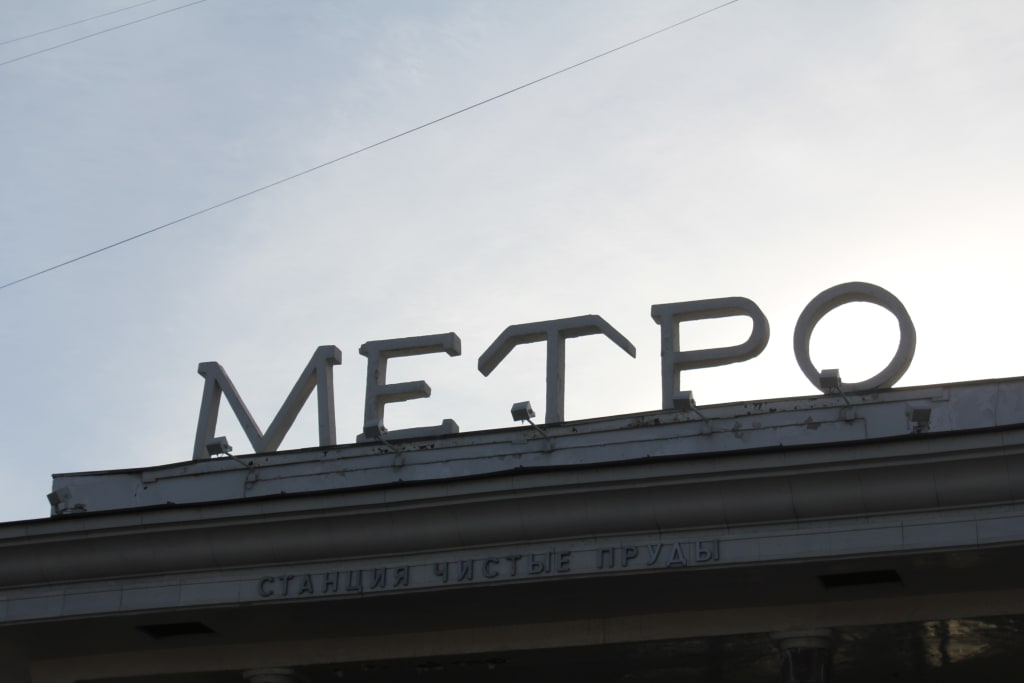
Moscow’s metro is more than just a mass transit network; with its lavish underground architecture it’s a tourist attraction in its own right. And, with hundreds of stations to visit, there are plenty of overlooked gems down there. Here are eight personal favourites, selected for entirely subjective reasons, that should have you itching to explore the Moscow underground.

Aviamotornaya
This is a station that resonates with me. When I moved to Moscow in 2006, I was put in a room in an apartment at Novogireyevo, a dormitory suburb at the end of the line. My first journey to the city took me through Aviamotornaya, a vision of gold and marble and one of the hidden gems of the network. Opened in 1979, it took its inspiration from the nearby Salyut factory, which manufactures engines for aircraft. And the designers’ imagination took flight, creating a golden heaven of a ceiling and a statue of a modern-day Icarus, propelled by more reliable wings than the mythical original.

Baumanskaya
Ploshchad Revolyutsii is the most renowned sculpture gallery on the metro, with the muzzle of the border guard’s faithful dog patted to a gleaming shine by passers-by. But it’s not alone. Baumanskaya, in the eastern suburbs, also features a fine collection of patriotic figures. This is a wartime station, opened in 1944, and the statues – conceived by Vyacheslav Andreyev and completed by his grand-daughter Olga in partnership with Sergei Koltsov – reflect this. Fighter pilots, partisans and Red Army soldiers take pride of place, while the home front is represented by construction workers toiling to complete the metro. A red banner of Lenin presides over the hall; originally he shared his place on the mosaic with Stalin, but the latter was removed in 1963, an ironic echo of his own tendency to airbrush photos of those no longer deemed politically correct.

Dostoevskaya
Fyodor Dostoevsky is more closely associated with St. Petersburg, a city that has a brooding presence in many of his greatest works. But he was born in Moscow and when the metro was extended towards the street where he grew up, his name was the obvious choice for a new station. However, the 2010 opening was not greeted with unconfined joy. The sombre colour scheme was gloomy enough, but it was the depictions of scenes from his novels – including a murder from ‘Crime & Punishment’ and a suicide from ‘The Demons’ – that really upset commuters. The artist responsible, Ivan Nikolaev, dismissed the complaints, telling Izvestia: “What do you want? Scenes of dancing? Dostoevsky didn’t write them.” Instead, the author’s face looms over one end of the platform, a deterrent against any undue levity while traveling to this corner of the capital.

Dynamo
The oldest station in this selection, Dynamo was opened in 1938 as part of the second phase of the metro. As the name suggests, it served the Dynamo Stadium, opened a decade earlier and, at the time, the biggest stadium in the USSR. This was an era of Stalinist extravagance, with the metro intended to demonstrate the superiority of the Soviet system by whisking citizens around the capital via a network of palatial stations. The design owes much to sporting ideals, from the Corinthian principles of the temple-like entrances at ground level to the decorative panels of socialist-realist sculptor Elena Janson-Manizer on the platforms. Her work also crowns the two pavilions that allow access to the station, making Dynamo a good place to hop off the train and take a look outside.

Elektrozavodskaya
Named after the ‘Electric factory’ next door, the power of Soviet industry crackles through the fittings of this wartime station. Take a look at the light fittings, with their jagged jolts of lightning. The factory built transformers and other essentials for the power plants that turned the USSR into an industrial powerhouse and, when first mooted in the 1930s, the adjacent station was intended to reflect that electrification. However, the war intervened. By the time the station opened, in 1944, the theme had changed to incorporate the heroics labourers of the home front and their role in the victory over Nazi Germany. Now, sculpted panels commemorated a wider range of industrial and agricultural workers, initially presided over by a profile of Stalin. That vanished in 1960 but the marbled halls remain, which a judicious hint of red-tinged stone to give a nod to the colours of the revolution.

Mezhdunarodnaya (International)
At the end of a spur of the Filiyovskaya Line, serving the Moskva City business district, Mezhdunarodnaya doesn’t attract much tourist traffic. That might explain why it’s one of the smallest stations on the network, built to London-style proportions with a platform length of 118m (compared with the usual 162m) and a vault of just 7m (compared with 9.2m). Small, but perfectly formed, this 2006 design has an oddly space-age feel to it. Its curved lines evoke the feel of the corridors in Stanley Kubrick’s spacecraft in 2001: A Space Odyssey, while its pristine, gleaming surfaces – marble and granite – lend a clinical, sterile atmosphere. Visit on a Sunday when the business centre is shuttered and catch a glimpse of the future of mass transit.
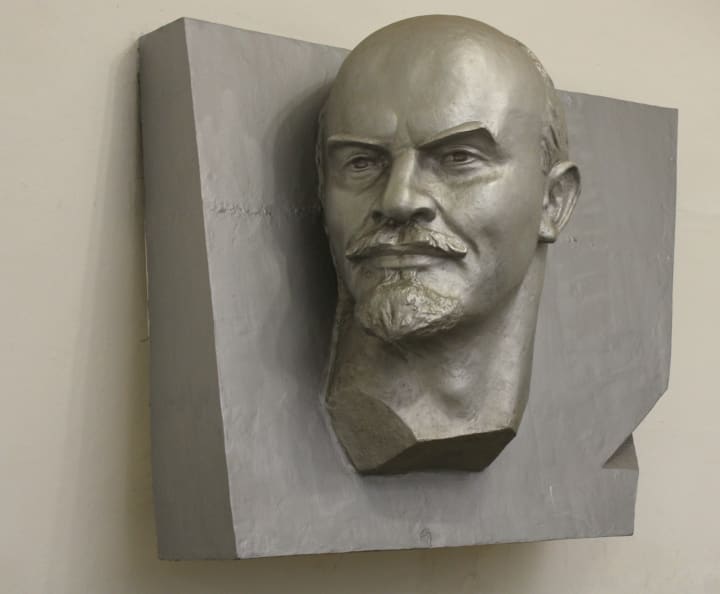
Ploshchad Ilyicha / Rimskaya
The passage that links these stations takes travellers on a journey from Soviet stagnation to the shock of post-Communist Russia - via ancient Rome. Ploshchad Ilyicha, the older of the two is a sombre affair. Named after a square that referenced Lenin, its design brief urged the architects to produce a ‘realisation of Lenin’s ideas’; red granite, hammers and sickles, and an imposing bust of the revolutionary leader dominate, while the jagged lines of the light fittings hint at Vladimir Ilyich’s insistence on the electrification of the Soviet Union.
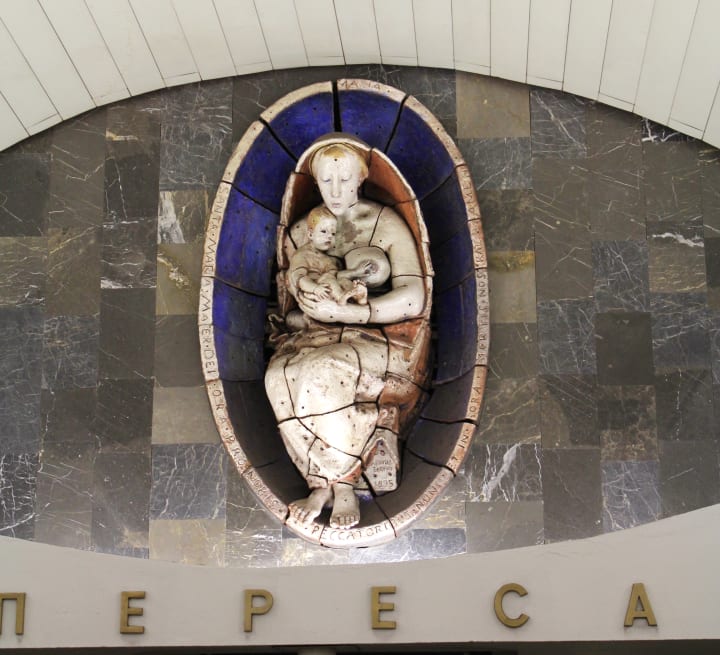
Rimskaya station was opened 25 years later, in 1995, as part of the first wave of post-Soviet metro expansion. Named after Rome, its design explores the ancient city – Romulus and Remus play on a Roman column; the Vatican is referenced by a Madonna and Child sculpted over the entrance. The styling is unashamedly modern, the human figures have an element of the grotesque; the contrast with the socialist-realist visual language of the preceding regime could hardly be more striking.
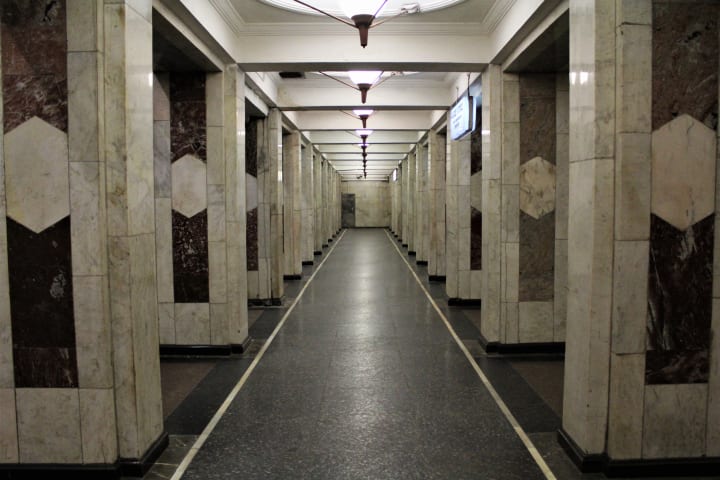
Semyonovskaya
With its double rows of pillars flanking both sets of platforms, Semyonovskaya has a distinctive, labyrinthine feel. The unusual design stemmed from a change of plan midway through the project – the original massive pylons intended to hold up the roof and separate the platforms were replaced by pillars, but the depth of the station meant four rows were needed rather than the usual two. It’s not the only change that’s affected Semyonovskaya: politics ensured that its original name, Stalinskaya, was changed in 1961; a sculpture showing the moustachioed generalissimo cuddling a young boy, entitled ‘Thank you Comrade Stalin for our happy childhood’, also disappeared around this time. Ironically, the sculptor, Georgy Lavrov, saw his fortunes go the other way. Arrested and sent to the Gulag in 1937, a year after casting this work, he was fully rehabilitated in 1957 and was named an honoured artist of the Russian Soviet Federal Socialist Republic in 1984. Like Moscow’s other wartime stations, Semyonovskaya has a military feel. A sculpted aluminium relief proclaims ‘Glory to our Red Army’, the tunnel walls are decorated with panels showing aircraft, missiles and rifles. But it’s the forest of pillars, with their panels of red marble, that make the greatest impression here.
For more images from Moscow’s metro, please visit my photo site.
About the Creator
Andy Potts
Community focused sports fan from Northeast England. Tends to root for the little guy. Look out for Talking Northeast, my new project coming soon.
Enjoyed the story? Support the Creator.
Subscribe for free to receive all their stories in your feed. You could also pledge your support or give them a one-off tip, letting them know you appreciate their work.

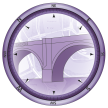


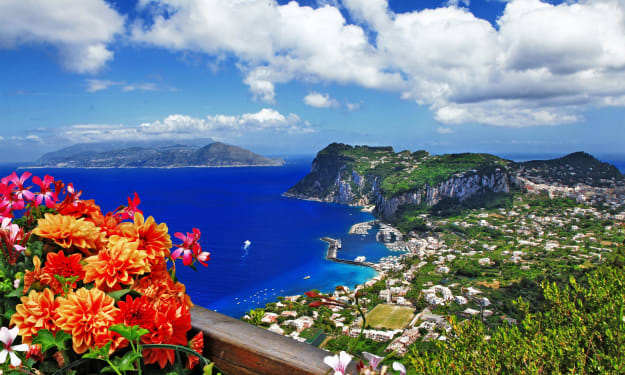

Comments
There are no comments for this story
Be the first to respond and start the conversation.